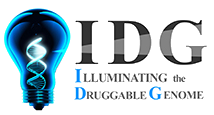Drug results: 5
| carbidopa | An inhibitor of DOPA DECARBOXYLASE that prevents conversion of LEVODOPA to dopamine. It is used in PARKINSON DISEASE to reduce peripheral adverse effects of LEVODOPA. It has no anti-parkinson activity by itself. |
|
| levodopa | The naturally occurring form of DIHYDROXYPHENYLALANINE and the immediate precursor of DOPAMINE. Unlike dopamine itself, it can be taken orally and crosses the blood-brain barrier. It is rapidly taken up by dopaminergic neurons and converted to DOPAMINE. It is used for the treatment of PARKINSONIAN DISORDERS and is usually given with agents that inhibit its conversion to dopamine outside of the central nervous system. |
|
| entacapone | Entacapone is a selective and reversible inhibitor of COMT. COMT catalyzes the transfer of the methyl group of S-adenosyl-L-methionine to the phenolic group of substrates that contain a catechol structure. Physiological substrates of COMT include dopa, catecholamines (dopamine, norepinephrine, and epinephrine) and their hydroxylated metabolites. The function of COMT is the elimination of biologically active catechols and some other hydroxylated metabolites. When entacapone is given in conjunction with levodopa and an aromatic amino acid decarboxylase inhibitor, such as carbidopa, plasma levels of levodopa are greater and more sustained than after administration of levodopa and an aromatic amino acid decarboxylase inhibitor alone. It is believed that at a given frequency of levodopa administration, these more sustained plasma levels of levodopa result in more constant dopaminergic stimulation in the brain, leading to greater effects on the signs and symptoms of Parkinson's disease. |
|
| foslevodopa | Foslevodopa and foscarbidopa combination (ABBV-951) was aproved by PMDA for the treatment of motor fluctuations in patients with advanced Parkinson’s disease. Foscarbidopa and foslevodopa are prodrugs of carbidopa and levodopa, respectively. They have higher solubility than their parent compounds, which allows them to be administered as a continuous subcutaneous infusion. |
|
| foscarbidopa | Foscarbidopa and foslevodopa combination (ABBV-951) was aproved by PMDA for the treatment of motor fluctuations in patients with advanced Parkinson’s disease. Foscarbidopa and foslevodopa are prodrugs of carbidopa and levodopa, respectively. They have higher solubility than their parent compounds, which allows them to be administered as a continuous subcutaneous infusion. |
|



